|
Wire bonding involves the use of
special wire bonding equipment
that applies pressure,
temperature and ultrasonic
energy to the bonding wire to
form interconnecting welds
between the semiconductor die
and device substrate pads. There
are two types of wire bonds that
are formed: ball bonds and wedge
bonds.
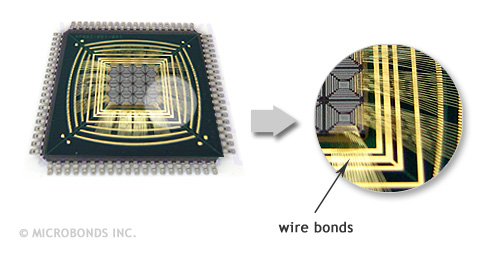
A brief summary of one cycle of
the wire bonding process is
outlined below. This cycle may
repeat thousands of times in
order to complete all the wire
bonded electrical connections
within a single integrated
circuit device.
1.
Bonding wire on a spool passes
through a capillary tool and
down to meet an electrode where
an electrical spark is used to
melt the tip of the bonding wire
to form a free-air-ball (sphere)
approximately 2x the diameter of
the wire.
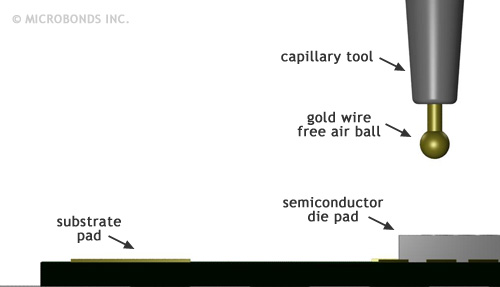
2.
Thermosonic (ultrasonic plus
thermal) energy is applied to
the ball through the capillary
tool to weld the first end of
the wire to the metal-plated
semiconductor die pad and form a
ball bond.
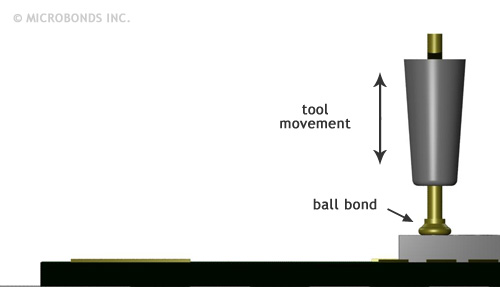
3. The
capillary tool moves following a
specific trajectory path to form
a wire loop above the connecting
device substrate pad.
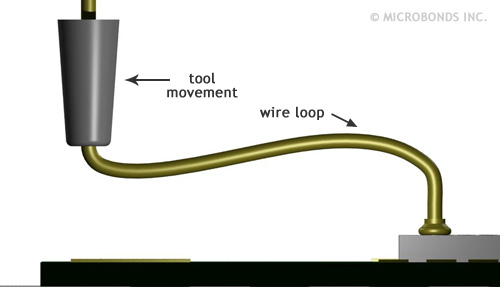
4. The
capillary tool then descends and
again applies thermosonic energy
to weld the second end of the
wire end to the metal-plated
device substrate pad to form a
wedge bond.
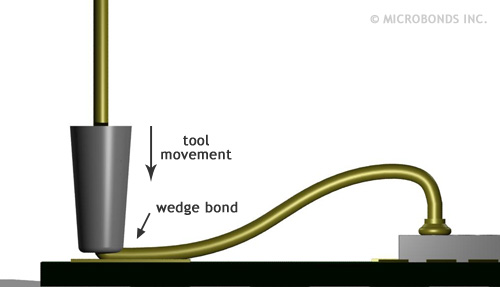
5. The
capillary tool then makes a
final movement to cut the wire
from the wedge bond and extend a
fresh tail length of wire for
the free-air-ball of the next
wire bond.
 |